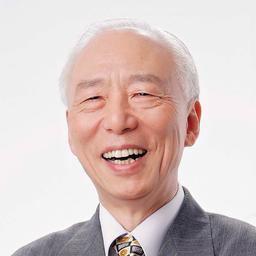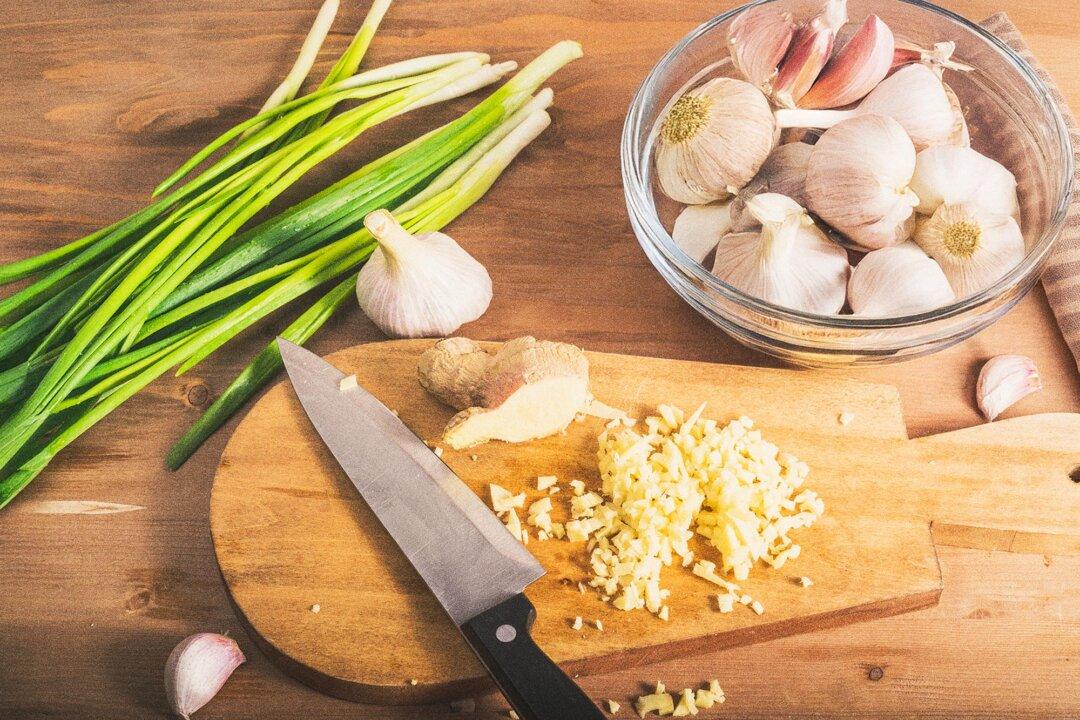TCM focuses on a holistic approach to stomach pain and integrates acupuncture, foods, and stress reduction as a means of both prevention and healing.
Stomach pain is an all too common ailment. In traditional Chinese medicine (TCM) symptoms of the stomach or duodenum, are known as “xin xia tong” (pain below the heart) or “wei wan tong” (epigastric pain), and often manifest as sensations of pain, bloating, or heartburn. Aside from using medications for relief, what other methods are available to alleviate stomach pain?
Western Medical Approaches for Treating Stomach Pain
Before the widespread use of gastrointestinal endoscopy for diagnosis, physicians used to diagnose stomach pain by analyzing its symptomatic manifestations to distinguish whether it stemmed from the stomach or the duodenum. For instance, stomach ulcers typically exhibit “hunger pain” and “fullness pain,” while duodenal ulcers commonly present as “hunger pain” and “fullness bloating.”From the perspective of Western medicine, the most common causes of stomach pain are gastroesophageal reflux disease (GERD), ulcerative dyspepsia, and non-ulcer dyspepsia. To address these three causes of stomach pain, Western medical practitioners primarily use pain relievers, acid suppressants, mucosal protective agents, nerve blockers, proton pump inhibitors, and digestive aids to alleviate symptoms.
Among these medications, the most superficial solution is the use of pain relievers. While pain is temporarily alleviated, the underlying causes of discomfort remain unresolved, allowing the condition to persist and progress.
Some doctors attribute stomach pain to excess stomach acid and suggest using alkaline substances like baking soda or acid suppressants to neutralize its acidity and provide relief. However, this approach may trigger a rebound effect in the stomach, resulting in increased secretion of stomach acid. The consequences far outweigh the benefits.
There are more advanced treatment methods as well. One involves the use of aluminum-based agents to coat the stomach lining, preventing damage from stomach acid. Another method employs nerve blockers to interrupt the neural signals triggering stomach acid secretion. Additionally, proton pump inhibitors are utilized to reduce the production of stomach acid from the glands. In some cases, neuromuscular blocking agents are used to prevent the contraction of stomach muscles, thereby alleviating pain.
In modern times, bacteria such as Helicobacter pylori have been identified. Antibiotics are used to eradicate these bacteria, offering another method for treating stomach pain. However, these chemical agents may, to some extent, pose risks of harm to the body.
Additionally, a treatment perspective suggests that if ingested food is not promptly digested, it may lead to gas formation and bloating in the stomach, causing pain. Therefore, enzyme-rich probiotics, yogurt, and bovine stomach extracts are utilized to improve digestion and alleviate stomach pain with minimal side effects.Traditional Chinese Medicine Diagnoses for Stomach Pain

- (ViewStock/Shutterstock)
“Liver qi stagnation” can also be referred to as “abdominal distension with cold colic” or “epigastric discomfort.” Abdominal distension indicates an excess of qi (energy) in the stomach, cold colic is formed due to cold, and “epigastric discomfort” refers to extreme muscle spasms in the stomach causing hardness and pain. The specific causes of stomach pain can be determined through the results of TCM diagnosis.3 Acupoints for Alleviating Stomach Pain

- There are three acupoints in the human body for treating stomach pain: Zusanli, Gongsun, and Neiguan. (The Epoch Times)
In traditional Chinese medicine, the approach to treating illnesses not only targets symptoms but also aims at addressing the root cause. A key aspect of alleviating symptoms is reducing pain, and there are three acupoints in the human body commonly used for treating stomach pain: Zusanli, Gongsun, and Neiguan. Stomach pain is associated with the Foot-Yangming
meridian. Therefore, performing acupuncture directly on Zusanli not only relieves pain but often also provides therapeutic benefits for the underlying issue.
The Locations of Acupoints for Treating Stomach Pain
Zusanli is located in a depression or groove 3 inches below the kneecap, approximately 4 finger-widths horizontally.
Gongsun is located within the depression in front of the inner ankle, one inch backward from the base of the big toe, specifically at the anterior base of the first metatarsal bone on the foot’s inner side.
Neiguan: Place your hand on a table with the palm facing upward. This acupoint is located between the two tendons, approximately 2 inches or 3 finger-widths in the direction from the center of the wrist crease towards the elbow.
Acupuncture at the Gongsun acupoint of the Chong Mai and the Neiguan acupoint of the Yin Wei Mai can effectively address pain in the cardiac region, benefiting conditions related to the stomach, heart, and chest. Even when uncertain about the specific problematic area, acupuncture on these acupoints can provide relief, as long as the pain is around the cardiac and epigastric regions. Subsequent acupuncture on Zusanli often leads to significant improvement and may prevent the recurrence of such ailments in the future.
For those unfamiliar with acupuncture, massaging is a viable and effective alternative. The three mentioned acupoints are safe for massage, with no specific guidelines on frequency or duration. Massaging these points can offer immediate relief for pain issues, and regular massage can contribute to overall body well-being.
TCM attributes stomach pain stemming from mental tension and anger to an excess of liver qi. To address this, massage therapy can be employed by targeting acupoints like Taichong and Yanglingquan.

- Taichong acupoint (The Epoch Times)

- Yanglingquan acupoint (The Epoch Times)
On the other hand, when stomach pain is caused by psychological factors, massaging acupoints such as Shenmen and Sanyinjiao can effectively address the root cause of the discomfort.

- Shenmen acupoint (The Epoch Times)

- Sanyinjiao acupoint (The Epoch Times)
Recipes for Strengthening the Spleen and Nourishing the Stomach
People who often experience stomach pain should limit the consumption of cold, spicy, sweet, and difficult-to-digest foods to avoid adding burden to the stomach. Here, we recommend two recipes for nourishing the spleen and stomach:
1. Pig Stomach Soup With Lotus Seeds
Ingredients:
- 1 tael (about 1.33 ounces) of lotus seeds
- 1 pig stomach
- A pinch of pepper
Preparation: Wash the lotus seeds, pig stomach, and pepper thoroughly, then place them in a pot. Add an appropriate amount of water and cook into a soup.
Lotus seeds tonify the spleen, pepper warms the stomach, and pig stomach is believed in TCM to contribute to the healing of the stomach (based on the principle that consuming something visually similar to a body part can nourish it). This soup has a warming effect, making it beneficial for individuals with a cold stomach.
2. Hawthorn and Malt Congee

Ingredients: - 15 grams (~1/2 ounce) of hawthorn
- 15 grams of malt
- 100 grams (~3.5 ounces) of glutinous rice
Preparation: Wash the hawthorn, malt, and glutinous rice thoroughly, then place in a pot. Add an appropriate amount of water and cook into a porridge. Hawthorn aids in dissolving meat accumulations, malt helps digest grain accumulations, and glutinous rice, when cooked into congee, benefits the spleen. Combining these three ingredients into congee promotes spleen health, stimulates appetite, aids digestion, and alleviates symptoms of poor digestion such as bloating and reduced appetite.
Tips for Maintaining Digestive Health
TCM places a strong emphasis on “preventing illness rather than treating illness.” This suggests that individuals who have previously experienced stomach pain or are at risk of developing it should take preventive measures before the pain occurs. The idea is to guard against the onset of illness, rather than seeking medical help only when the condition becomes severe.So how can we care for our stomachs in daily life? Stomach pain is usually not solely a stomach issue—for instance, stomach acid can trigger contractions in the smooth muscles, and excessive contraction leads to spasms and pain. Additionally, when nerves influence stomach wall cell acid secretion, it can result in spasms and contractions in the smooth muscles. This issue is closely linked to our mental state.
While maintaining a stable mental state may not directly alleviate stomach pain, it does impact stomach acid secretion. When emotions and mental well-being are balanced, stomach acid secretion tends to be normal. Excessive stomach acid secretion can lead to duodenal ulcers, while too little stomach acid secretion may result in stomach ulcers.
TCM concepts such as adapting to changes in temperature, balancing the five flavors, maintaining emotional equilibrium, and moderating desires align with the principles outlined in “The Yellow Emperor’s Classic of Internal Medicine.” These practices contribute to overall well-being as emphasized in the ancient text.
It is worth noting that nutritional recommendations from modern doctors or nutritionists may not be universally suitable. Therefore, when it comes to diet, it is advisable to opt for natural foods that suit your digestive system.
In clinical settings, it is common to see patients, in an attempt to boost protein intake following the advice of nutritionists, drink too much milk or high-protein foods like cheese, nuts, and beef. This, in turn, results in bloating and severe stomach pain. However, these patients have experienced improvement in their condition after modifying their dietary habits.
When to Seek Medical Attention?
If methods like dietary changes, massage, and emotional adjustments do not bring noticeable relief to stomach pain, it suggests the condition may require professional attention. It is crucial to consult a doctor for further examination.Typically, TCM practitioners employ a comprehensive approach known as the “four diagnosis methods” to identify the underlying causes of an illness. This includes analyzing whether factors such as exposure to cold or dampness, emotional states like anger, excessive worry, or sorrow, as well as an unclean or imbalanced diet, contribute to the condition.
After examining the factors mentioned above, TCM treatment can effectively address both symptoms and the root cause, ultimately leading to the successful resolution of stomach pain.
Views expressed in this article are the opinions of the author and do not necessarily reflect the views of The Epoch Times. Epoch Health welcomes professional discussion and friendly debate. To submit an opinion piece, please follow these guidelines and submit through our form here. 













